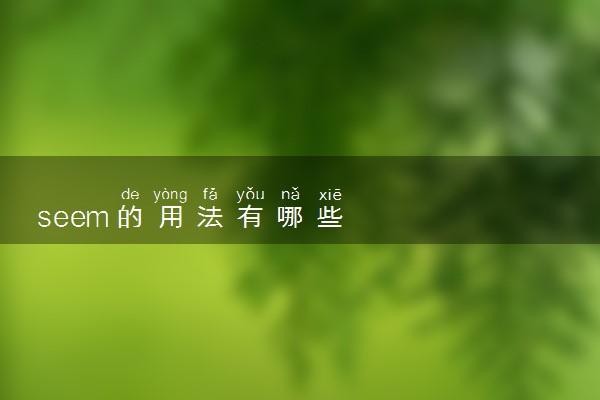seem可用作连系动词或不及物动词,意为“似乎;好像”。seem的用法有哪些呢,我们一起来了解一下吧。

seem
英[siːm],美[siːm]
v.(涉及推断)好像,似乎,看来;(用以缓和语气)感到好像,觉得似乎;(表示不确切或客气)看来好像
第三人称单数:seems现在分词:seeming过去式:seemed过去分词:seemed
seem用法
一、“主语+seem+(to be)+表语”,表语多为名词或形容词,有时是其他的词或短语,以说明主语的特征或状态。例如:
1、Tom seems(to be)a very clever boy.
汤姆看上去是一个非常聪明的男孩。
2、The man over there seems to be a new teacher.
那边的那个人看上去像一个新老师。
二、“主语+seem+不定式”,此句型中的seem与不定式一起构成复合谓语。例如:
1、Mrs Green doesn’t seem(或seems not)to like the idea.
格林夫人似乎不太喜欢这个主意。
2、The children seemed to be eating something in the room.
孩子们好像正在房间里吃东西呢。
三、“It seems+that从句”,其中it是形式主语,that引导主语从句。例如:
1、It seems that no one knows what has happened in the park.
似乎没有人知道在公园里发生了什么事。
2、It seems to me that Mr Brown will not come again.
在我看来布朗先生不会再来了。
四、“There+seem to be+名词”,其中to be可省略。seem的单复数形式要根据后面作主语的名词的单复数形式而定。例如:
1、There doesn’t seem to be much hope of our beating that team.
看来我们战胜那个队没有多大希望。
2、There seems no need to wait longer.
看来没有再等的必要了。